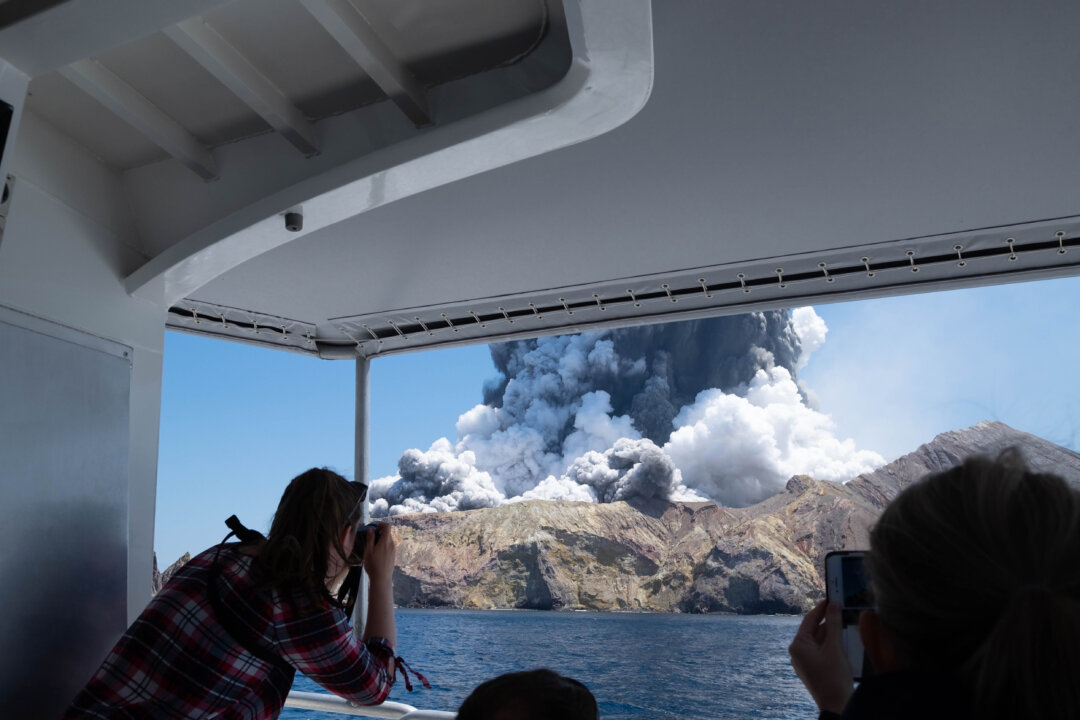The company that owns the volcano that erupted in 2019, is no longer held accountable for the disaster that killed 22 people and left many severely burned.
The High Court has overturned the conviction of the owners of White Island for failing to keep visitors safe during the deadly 2019 eruption which killed 22 people on eruption, and seriously injured 25 others.
The ruling means Whakaari Management is no longer liable for millions in fines and compensation.
The court found the company did not have control over safety measures on the volcanic island, shifting responsibility to government agencies and tour operators instead.
Most of the 47 people on the island when it erupted on Dec. 9, 2019, were cruise ship passengers from the United States and Australia on a guided walking tour.
Legal Battle Over Responsibility
After the eruption, WorkSafe New Zealand charged Whakaari Management, tour operators, and two government agencies—the Institute of Geological and Nuclear Sciences and the National Emergency Management Agency—with workplace safety breaches.
In 2023, Whakaari Management was found guilty in the Auckland District Court. The judge ordered the company to pay a fine of $1,045,000 and a reparation of $4,880,000 to the victims.
The main point of contention was whether the company, which charged a fee to allow tourism operators and scientists access to the island, was responsible for ensuring proper safety precautions were in place.
Those in charge of a workplace must manage hazards and protect people on-site.
Visitors Given No Warning
During the trial, survivors testified that they had not been told the active volcano was dangerous when they visited, and were not supplied with any protective equipment. Many were wearing clothing made of materials that made their already horrific burns even more damaging.
Justice Simon Moore decided that the company did not have a duty to ensure that the walking tour workplace had no risks to health and safety.
“The Court concluded that in enacting [the applicable health and safety laws], Parliament wanted to impose the … duty on persons with the ability to ‘actively’ manage or control a workplace in a practical sense, as opposed to those who simply had some element of management or control through, for example, ownership,” he said.
“In this case … it [is] significant that the walking tour workplace was bare land. This meant that there was nothing for [Whakaari Management] to manage or control on the walking tour workplace, other than granting access in the first place.”
Moore concluded that none of the contracts in place with the tour operators allowed the company to control what was happening on the island day to day or to “demand corrective action to ensure safety. ”
Government Agencies Held Responsible
The ruling emphasised that under the Whakaari Response Plan in force at the time, Emergency Management Bay of Plenty (EMBOP) was responsible for informing the public of the risks associated with the volcano and making decisions about restricting access to it.
The EMBOP also had legal obligations to identify, assess, and manage the hazards and risks associated with the island.
At the time of the eruption, all the relevant government agencies (including WorkSafe and the Ministry of Civil Defence) considered the Response Plan to provide adequate protection for the public.
Moore noted that even if the court had decided there was a legal obligation on Whakaari Management to ensure the tourists’ safety, it had already fulfilled its legal obligations.

